The Wooden Collection
Antique Seal Stamps Crafted from Precious Woods, including Ebony, Walnut, and Rosewood
Seal stamp engraved with the coat of arms of the alliance of Marshal of France Louis de Conflans, Marquis of Armentières, and Marie Charlotte de Senneterre (or Saint-Nectaire). The engraving includes the collar of the Order of the Holy Spirit, set upon crossed batons of the marshals of France. Louis de Conflans (1711-1774) was a French general. He was promoted to Lieutenant General in 1746 and was made a Marshal of France in 1768. He was the son of Michel III de Conflans, Marquis of Armentières, first gentleman of the chamber to the Duc d'Orléans and of Diane Gabrielle de Jussac, lady of the palace to the Duchesse de Berry, then dame de compagnie to the Duchesse d'Orléans. In 1770, he married Marie-Charlotte de Senneterre, granddaughter of Jean Charles de Saint-Nectaire.






This is a beautifully engraved wax seal stamp. Its well-balanced design strongly suggests a British or Italian origin. The supporters on this coat of arms are greyhounds. In heraldry, greyhounds symbolize specific qualities associated with these animals. Traditionally, greyhounds are admired for their loyalty. A greyhound is known for being a loyal companion, making it a fitting emblem for steadfastness and faithfulness. Nobility and Elegance is other meaning of their presence in a coat of arms.



This interesting and rather rare seal stamp made of oak and silver belonged to a high-ranking military officer. The shape is beautiful and unusual, with the letter H as the top inlaid. The upper rim shows the name E B Herbert, 17th Lancers, and Oct 21, 1901. The seal itself shows the alliance coat of arms of the Herbert and the Acton families. Edward Bleiddian (E.B.) Herbert was bord in 1858 in Wales. He married Hon. Mary Elizabeth Anne Dalberg-Acton, daughter of John Emerich Edward Dalberg-Acton, 1st Baron Acton of Aldenham and Maria Anna Ludmilla Euphrosina von und zu Arco auf Valley, on 21 October 1901. He gained the rank of Lieutenant-Colonel in the service of the 17th Lancers (Duke of Cambridge's Own).





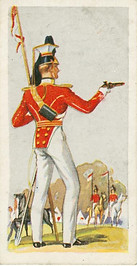

This old seal, acquired in France, is engraved with arms used by several families, making it difficult to identify its precise original owner. One notable family bearing such arms was the de Gorrevod, an old noble house of Bresse, originally under Savoyard rule. Rising to prominence in the late 15th century, the family gained influence through loyal service to the courts of Savoy, Margaret of Austria, and Emperor Charles V. Its most distinguished member, Laurent de Gorrevod (c. 1470–1529), served as Governor of Bresse, Baron of Marnay and Montenay, later Vicomte de Salins and Comte de Pont-de-Vaux, and acted as a trusted chamberlain and envoy. His brother Louis de Gorrevod became a cardinal and bishop. By the 16th and 17th centuries, the family held important offices and extended its authority across Bresse and Franche-Comté, reflecting the rise of provincial nobility to positions of wider political significance.





Arms of Laurent de Gorrevod and his two spouses

Family arms in the Gorrevod Chapel

Laurent de Gorrevod
This interesting stamp of the 1820s is from Hungary and belonged to a member of the family Szikszay of Szikszó and Debreczen (often written Szikszai, Szikszay, or Szikszay de Szikszó). Its name indicates origins and lands ties in the historic towns of Szikszó and Debrecen, both located in the eastern part of the Kingdom of Hungary. The family belonged to the lesser nobility (köznemesség), a broad class of provincial nobles who held properties and land, participated in local administration, and also frequently served in military or judicial functions. Szikszó (near Miskolc, in Borsod County) was a strategic settlement in medieval and early modern Hungary, especially during the Ottoman-Habsburg conflicts. Many noble families bearing territorial surnames such as Szikszay originated there. (Ai)








An old looking stamp is still very beautiful. It means that the stamp travelled through decades, or sometimes centuries, and carries lots of history. Old looking stamps can actually look nicer, more interesting and more important than the perfect shiny ones. Question of taste, of course. This one comes from Austria.



The engraving of this stamp shows an arm holding a sword, emerging from a cloud, which presents similarities with the arms of the Le Vaillant family, from Normandy. The Armorial d'Hozier refers to them as the lords of several estates. However, the stamp probably belonged to another family, since we can see a coronet, while the Le Vaillant family had no noble title. (Ai)




This stamp belonged to a member of the Desmarets family, the Marquis of Maillebois. Genealogical research can be fascinating and provides valuable insights into historic noble families. The round shield in this engraving suggests that this stamp belonged to a lady of the Marquis of Maillebois' family, possibly Madeleine Béchameil de Nointel, who was married to the 2nd Marquis of Maillebois, Nicolas Desmarets (1648–1721). Together, they had five sons and six daughters, so the stamp may have been passed down through one of them. However, I personally find it very unlikely that it could have survived for 300 years. So, the stamp could have also belonged to Louise Marie Emmanuelle de Tourzel d'Alègre, who married Jean-Baptiste II, Marshal of Maillebois and 3rd Marquis of Maillebois (1682–1762). She was the youngest daughter of Marquis Yves V of Allègre. When she married Jean-Baptiste-François Desmarets, Marquis of Maillebois, she became the Marquise of Maillebois. Together, they had one son and three daughters. Another possibility is that this stamp belonged to Marie-Madeleine de Voyer d'Argenson, who was married to Yves-Marie Desmarets, the 4th Marquis of Maillebois and Marshal of France (1715–1792). Yves-Marie was initially referred to as the Count of Maillebois.




Marie-Emmanuelle de Tourzel

Wax seal stamp engraved with the Desmarets family coat of arms

Yves-Marie Desmarets



Jean-Baptiste-Francois Desmarets
Alliance coat of arms of Desmarets and de Tourzel d'Alègre families
Nicolas Desmarets
The engraving of this interesting stamp features the coat of arms of Jacques Defermon des Chapelieres (1752–1831), who was Count of the Empire (1808) and Minister of State. The name was also spelled as (de) Fermon or (de) Fermond. The coat of arms is described as: "Ermine, a wild apple tree Sable, the sinister half with leaves and apples Argent, the dexter half with leaves and apples Or; a canton of a count-minister". In First Empire heraldry under Napoleon (1804–1815), a canton (or franc-quartier) was a small square positioned in the upper left corner (dexter chief) of the shield. It was used as a mark of distinction, for members of the newly established Napoleonic nobility. A Count-Minister was a noble title granted to high-ranking ministers of state. Their coat of arms included a specific heraldic augmentation: A canton charged with a lion's head erased Or. What makes this stamp unusual is the small wax compartment hidden in its handle, concealed by a screw-on cap. Additionally, the matrix bears the name Thénard. Ferdinand Thénard (1823–1889) was a French chiseler engraver and sculptor, though little information is available about him. Since Jacques Defermon des Chapelieres passed away when Ferdinand Thénard was still very young, it is likely that this particular stamp was made by one of Ferdinand's descendants.









One of the fascinating aspects of collecting antique seal stamps is that - even when the exact owner remains unidentified - they still offer insights into history. While consulting the Armorial Général de France, I came across a coat of arms bearing similarities to the one on this stamp: the arms of René Gaillard, lord of Charentonneau (or Charantonneau). Although we often assume that the owner of a château such as Charentonneau would be noble, René Gaillard was not. He acquired the estate in 1671. The château itself was a seigneurial residence, signifying local authority and landownership, but not necessarily noble status. René Gaillard was, nonetheless, a significant landowner. Notably, this stamp bears no engraved crown, so if we are to speculate, it may well have belonged to one of his descendants. Who knows...





This is a silver seal bearing the arms of the Belgian Lalaing family. The Lalaing family is an ancient aristocratic family from the south of Flanders, whose members played an important role in the history of the County of Hainaut and of the Netherlands.
The family Lalaing belongs to the most prominent Belgian noble families and descends from Gérard, Lord of Forest, mentioned ca. 1130. His grandson Simon, Lord of Lalaing, is mentioned between 1178 and 1184. Charles de Lalaing (1466-1525) of the elder branch uses as of 1522 the title Count. His younger son Philip de Lalaing becomes Count of Hoogstraten. Thanks to his wedding to Anne, Countess of Renneberg, daughter of William, Count of Rennenberg and Anne of Culemborg, Philip's descendants inherited multiple important lands and titles. His descendance however died out in the male line in 1698. The present counts de Lalaing descend from Antoine de Lalaing (1480-1540) a younger brother of Charles. Maximilien de Lalaing (1677-1756) married Catherine L'Archier, Countess of Thildonck. Their great grandson Charles de Lalaing, Count of Thildonck (1768-1816) was created a Count on 13-3-1816.





Drawing of Simon de Lalaing

The coat of arms of the Lalaing family

Philip de Lalaing, Count of Hoogstraten

Antoine de Lalaing and Elisabeth van Culemborg

Engraving of the Lalaing family arms
.jpg)
Simon_de_Lalaing (1405-1477)
This wax seal stamp is another beautiful and finely crafted object. The polished walnut wood handle is very elegant. The engraved arms show a dove volant (flying dove) flying above a landscape, and holding an olive branch, which is a strong symbol of peace, Holy Spirit, or divine favor. The oval shield suggests this seal belonged to a noblewoman, a countess in this case. I have yet to identify which family has such a coat of arms. (Ai)



This antique wax seal stamp is engraved with the arms of the French d'Andreossy family. Notably, the engraving features lictor's fasces (faisceau de licteur) above the crown, an unusual element in French noble heraldry. The fasces depict a bundle of rods bound together with a ribbon or cords, an axe emerging from the bundle. It originates from ancient Rome where it symbolized magisterial authority and power. In France, it later became associated with First French Republic, representing civic unity and strength through collective action. Despite this republican symbolism being rather rare, some French nobles serving under Napoleon as a high-ranking magistrate, governor, or military commander could have incorporated the fasces to signify a role in upholding royal justice. This was the case for Antoine-François, Count of Andréossy (1761–1828), who was an army general, diplomat, and parliamentarian. Some nobles who served under Napoleon’s First French Empire (1804–1814) incorporated the fasces into their heraldry, as it became a widely used imperial symbol. The Andreossy family was originally from Italy, where the use of the lictors' fasces is broader than in France because of its Roman origins. But the original family coat of arms did not include it. The stamp could have belonged to Victor Antoine Andréossy (1747-1819), who was a French general of the revolution and the Empire.







Lictor's fasces in an image of the revolution

Arms of Andreossy depicting the lictor's fasces

A Roman lictor, bearer of the fasces
The absence of a coronet or supporters in the coat of arms engraved on this stamp might indicate a knightly or untitled noble family. But the beautifully turned wooden handle with a screw-base compartment makes it rather interesting. This craftsmanship and form suggest that it was likely made for personal use, not mass-produced. Judging by the grain, tone, and figure, the wood appears to be boxwood, a fine, dense hardwood favored in the 18th and 19th centuries for small turned objects like seal handles.



This stamp bears the arms of the de Bessuéjouls family. The genealogy of this now-extinct noble house traces back to Nize de Bessuéjouls, born in 1209. The oval shape of the shield may suggest that it belonged to a female family member, possibly Françoise Rose de Bessuéjouls, who was known as Mademoiselle de Roquelaure. The families de Bessuéjouls and de Bessuéjouls de Roquelaure are historically connected, the latter representing a cadet or elevated branch that emerged when a member of the Bessuéjouls family acquired the seigneury of Roquelaure. A notable figure of this line was Jean-Armand de Bessuéjouls de Roquelaure (1721–1818), who was appointed Archbishop of Mechelen in the Austrian Netherlands (now Belgium). In heraldic sources, the family's arms appear with either an Or (gold) or Argent (silver) field, a variation that may reflect branch distinctions or later modifications, possibly introduced to mark elevation in rank or a shift in lineage.



.jpg)

Jean-Armand de Bessuéjouls Roquelaure
1721-1818

Seal stamp engraved with the arms of the
family de Bessuéjouls

Jean Armand de Bessuéjouls de Roquelaure,
Archbishop of Malines
This handle of this seal stamp shows clear signs of age and was probably used intensively. The engraving presents elements that make attribution challenging. The crest - two eagle wings elevated and addorsed - suggests a German origin. However, on the fess, there appears to be a female Moor’s head, which is more often encountered in countries such as France, Italy, and occasionally Spain. The stars in chief and base are fairly common charges across Europe, serving to further complicate definitive attribution without additional context.



This seal bears the arms of the Chavigny family, from Burgundy. The main line of the family became extinct by the late 17th century. Titles associated with them, such as Chastenay and Toulongeon, were transmitted and passed through marriage alliances. One of the most noted members was Jean de Chavigny, secretary of Michel de Nostredame (Nostradamus). He played a key role in preserving his master's prophecies. The most prominent figure was Claude de Chavigny, Baron de Chastenay and Comte de Toulongeon. Under Louis XIII, he served as Secretary of State for Foreign Affairs. Though the main Chavigny line has since died out, their heraldic legacy endured. The arms of Chavigny were incorporated into those of the Gravier family, through the marriage of Jean Gravier, marquis de Vergennes and Jeanne Chevignard de Chavigny. Their parti (per pale) coat of arms indeed reflects this union, bearing the Chavigny arms alongside their own.


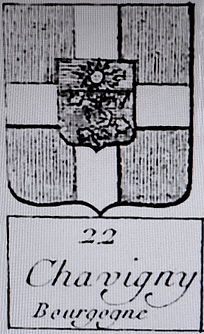

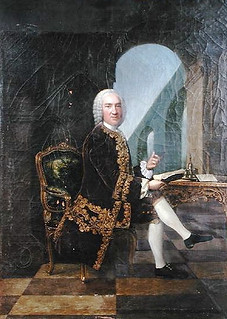
Théodore Chevignard de Chavigny

Wax seal stamp of the Chavigny family, from Burgundy

Charles Gravier, Comte de Vergennes
This simple yet elegant seal stamp features a round escutcheon, indicating that it likely belonged to a woman of noble rank. The coat of arms displays a gold field (Or), a green mount (Vert) and two lions in combatant posture. The lions, shown facing each other with forepaws raised, symbolize courage, strength, and noble rivalry. The oval shield is crowned with the coronet of a count, composed of pearls on raised points, confirming the bearer’s comital dignity. More research is needed, however, to find out to whom the stamp belonged.
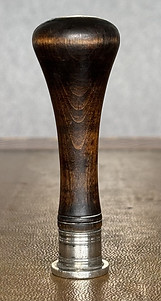
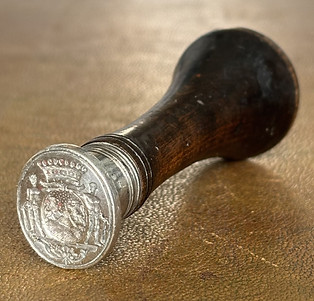
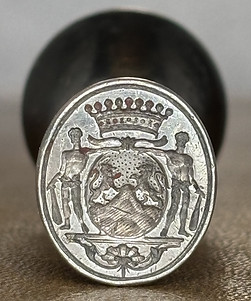
According to the accompanying note, this beautiful seal stamp was evidently cherished and preserved by a nephew or niece of Lieutenant Gabriel Vétillard du Ribert (1840–1902), who enlisted in the Zouaves Pontificaux (Papal Zouaves) in 1862.
He was awarded the “Fidei et Virtuti” (Faith and Courage) and “Pro Petri Sede” (For the See of Peter) medals, both pontifical military decorations recognizing distinguished service. He was also named a Chevalier of the Order of Pius IX, a papal honor granted for notable merit, whether civil or military. The Zouaves Pontificaux were a volunteer corps, primarily composed of French, Belgian, Dutch, and French-Canadian Catholics. The force of the Pontifical Zouaves was established in 1861 to defend the Papal States under Pope Pius IX against the forces of Italian unification and Garibaldi's troops.





Lieutenant Gabriel Vétillard du Ribert

Zouaves pontificaux (Papal Zouaves) in 1865

Stamp and seal of Gabriel Vétillard du Ribert
To appreciate a particular antique wax seal stamp is a matter of taste. At times, I acquire a stamp not so much for the story behind the engraved coat of arms, but simply for the beauty of the object itself. In this case, I find the shape of the handle and the quality of the engraving appealing. Although I cannot identify the original owner, the craftsmanship is noteworthy. The crown corresponds to that of a marquess in English heraldry, while the shield takes the form of an “eared-top escutcheon,” a style popular in continental heraldry.



Although the handle of this seal stamp is not among the finest in the collection, its engraving is both highly interesting and rare. The coat of arms belongs to a branch of the Payen family, established by Maximilien François Joseph Payen (also spelled Paijen), who appears to have altered the family arms upon his marriage to Noble Dame Florence de Langhe d’Hoflande in 1725, thereby founding a new line. Maximilien François Joseph Payen was chevalier and baron de Lalleu, and held the seigneuries of La Béquière, Brebière, and Beaumont. The matrix of the stamp can be dated to the early 18th century, which makes it unusually early. Notably, it bears the very distinctive coronet of a “baron branbançon”, which is the heraldic coronet specific to a baron in Brabant (a duchy of the Low Countries, today divided between Belgium and the Netherlands), a feature that is exceedingly rare.

The distinctive coronet of a baron of the Duchy of Brabant
%2C%20titled%20chevalier%20and.jpg)



Alliance of Maximilien Francois Joseph Payen and Florence de Langhe d'Hoflande in 1725
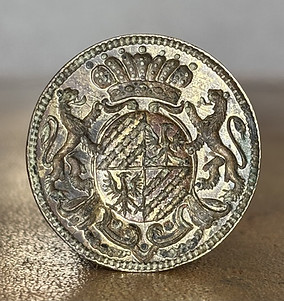
The arms of the branch of the Payen family, differenced by a quarterly division, and a coronet of Baron Branbançon

Registration of the coat of arms of Adrien Payen, (Departmental Archives of Pas-de-Calais)
This 19th century metal stamp from Germany is kept in a nice wooden case. While a finely turned case elevated the object from a purely utilitarian tool to a personal possession with a touch of refinement, its main purpose was to protect the seal. Storing it in a case prevented dust or grit from settling into the matrix, which could cause imperfect impressions or even scratches during the next use. Brass or steel matrices were prone to scratches, dents, and corrosion. The case prevented the engraving from being in contact with hard surfaces.

%2019_%20Jhd_%20Wappen.jpg)

The presence of the tower and the lion in this coat of arms strongly recalls Château Latour, an iconic heraldic emblem in wine history: Argent, a tower gules, masoned sable, surmounted by a lion passant guardant gules. Yet, while the tower-and-lion motif unmistakably evokes Latour, the shield on this stamp is gules (red). This difference suggests that, even if the stamp was sold as such, it more likely originates from a noble family unconnected with the world-renowned estate. Unlike many Bordeaux domains with deep aristocratic roots, Château Latour was not tied to a noble lineage but passed through various owners over time. The marquis’ coronet above the shield further supports the view that these arms may have belonged to a noble family distinct from Latour. Even so, this seal, indirectly, offers insight into the broader history surrounding Château Latour.



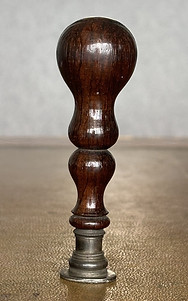
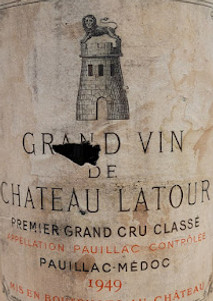


This elaborate seal stamp presents a coat of arms that unites several noble lineages, each represented by a separate quarter. The upper-left quarter, Gules, a pale Or separating two capital Bs from a demi-eagle crowned Or, is a configuration typical of the Holy Roman Empire. The upper-right quarter, Azure with a harp Or, clearly evokes Ireland, suggesting descent from an Irish noble house, possibly one of the families that settled on the Continent during the Jacobite period. The lower-left quarter is divided per bend sinister and shows two family arms. On side shows a chevron and three eagles on a field Sable, with a chief Azure charged with a yet-to-identify symbol topped with a crown. The other is charged with a chandelier on a field Or. The last quarter of the arms, with its field Sable, horizontal bars Or, and a diagonal band, points toward a southern European lineage, possibly Italian or Spanish. Above the shield appears a radiant crown whose form may be read in two ways. In French heraldry it corresponds to the crown of lords possessing lands of principality. In a broader heraldic context, it also resembles the antique crown used in Italian armorial tradition. Below this crown sits a Maltese-type cross and a draped mantle, indicating that the owner belonged to a Catholic military order, most plausibly the Order of Saint Lazarus or the Order of Malta. Another noteworthy element of this heraldic composition is the engraved motto: Prou de Pis, Peu de Pair, Point de Plus. Written in early French, it can be translated as: “Many worse than I, few my equals, none above me.” It expresses the confident pride of a nobleman conscious of his lineage.





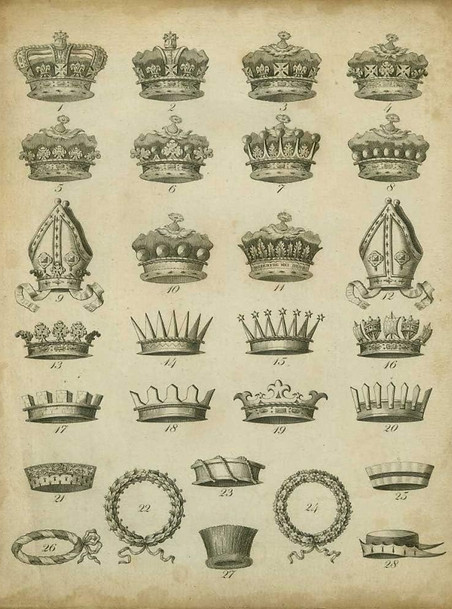
This seal stamp was used by a lady of the Belhomme de Franqueville family, as shown by the round engraving of their arms "De gueules à une aigle d’or éployée, surmontée de trois étoiles d’argent posées en fasce". Their origins lie in Normandy. Among their more distinguished members was Albert Belhomme de Franqueville (1814-1891), known as “le Comte de Franqueville,” who settled at the Château de Franqueville (previously Château de Bizanos) in 1854. A botanist and alpinist, he achieved the first ascent of the Aneto in 1842 and developed the château’s exotic gardens. Other family members held municipal and landed positions, reflecting their status among the provincial nobility of the 19th century. The two branches - Franqueville in Normandy and the Caudecoste line in Lot-et-Garonne - together illustrate a modest but enduring noble house: anchored in land, science and regional society rather than high peerage.





Albert belhomme de Franqueville

Arms of the Caudecoste branch of the Belhomme family

Henriette Belhomme de Franqueville
This elegant seal, with its beautiful wooden handle, belonged to a descendant of Jean Doyen. Resident of Lunéville, he was ennobled on 4 October 1628 for military service in the guards of “feu S.A.”, that is, feu Son Altesse (“the late His Highness”). This formula is characteristic of ducal Lorraine, not of the Kingdom of France. In 1628, Lunéville lay within the Duchy of Lorraine, then a sovereign state under Duke François II (followed immediately by Duke Charles IV). Jean Doyen’s ennoblement likely came from the ducal chancery of Lorraine, rewarding loyal service in the ducal guards, an elite military corps attached to the person of the duke. Such ennoblements were common in Lorraine, where military merit - especially personal service close to the sovereign - was a recognized path to nobility. This was a personal and hereditary nobility within Lorraine, conferring the status of écuyer. It did not automatically grant French nobility until Lorraine’s later incorporation into France in the 18th century, though many Lorraine nobles were subsequently recognized.


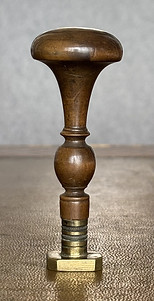

Francois II, Duke of Lorraine

Coat of arms granted to Jean Doyen

Charles IV, Duke of Lorraine
This stamp, which could date from as far as the 18th century, is engraved with the coat of arms of the des Ours (or Hours) family, lords of Calviac. The genealogy of the family starts in the 16th century, with Bernard des Ours, Seigneur de Calviac. “Ours” in French means “bear”, and we notice two bears as supporters of the shield. The shield of the coat of arms engraved on this stamp being round, it could have belonged to Antoinette Hédelmone Rosa, who was the daughter of Louis des Ours de Calviac (1764 - 1822), Seigneur de Calviac. The Ours de Calviac family resided in a castle in Lasalle in the French department of Gard. The original castle dating back to the 13th century was attacked, put on fire, and destroyed several times. The present-day castle was rebuilt in the 16th century and renovated in the 19th century.


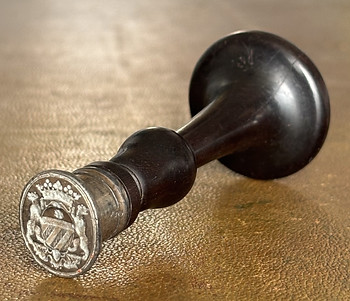

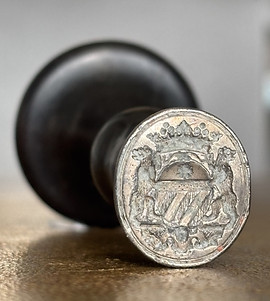
The shield of this coat of arms is party per pale, meaning it's divided vertically into two equal halves. It is surmounted by a noble coronet, likely that of a count (nine pearls visible). The dexter side is divided into three sections, which in heraldry is called "tierced per fess". Each section is bearing distinct charges (eagle, stars, and tree). This style of division is relatively rare and often found in Italian, Savoyard, or Franco-Lombard heraldic contexts. The base of the sinister side shows checkered pattern difficult to identify.

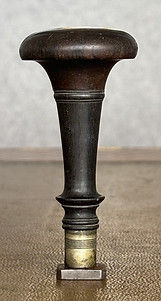

The seal stamp with an oval mattrix made of silver is engraved with the coat of arms of the family d’Adhemar de Montfalcon et de Panat. The Adhémar family, (formerly Azémar), is a family of the French nobility of chivalrous extraction, originally from Dauphine and Rouergue. Its lineage has been followed since 1313. It formed several branches, of which most are extinct, such as the branches of Monteil, Cransac and Lantagnac. The Adhémar family counts in its ranks numerous officers, some of whom died in combat, pages and squires of the royal family, some decorated with the Order of Saint-Louis and the Legion of Honor. The motto of the family is "Plus d’honneur que d’honneurs" (More honor than honors). While all were nobles, the genealogy of the family and the connection between the Monteil and Montfalcon branches is however disputed by historians.
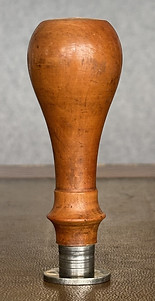

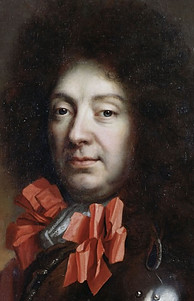
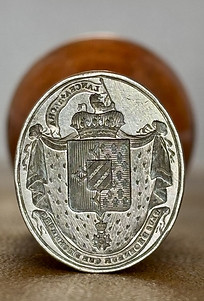


The two shields on this engraved coat of arms represent a marriage alliance. The dexter side shows a horse passant, on aa Azure shield. In heraldry, the horse symbolizes speed, service, nobility, and readiness. It is also associated with military strength, free movement, and in some cases, travel or conquest. On the sinister side we see two scepters in saltire, symbol of authority. The stamp could originate from Northern Italy, and likely dates from the late 18th to early 19th century.

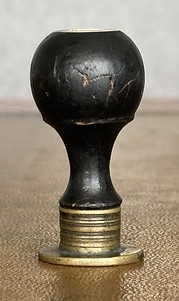

A - not so refined - seal's engraving showing a crowned lion rampant. Many families informally adopted crowned beasts, especially when they had received honors or wanted to display proximity to power. In most European heraldic traditions, crowns were marks of sovereignty or concession, not mere decoration. However, this could be just a fancy coat of arms.




Gerry's Collection of Antique Seal Stamps.







